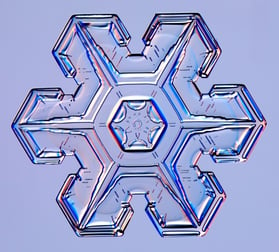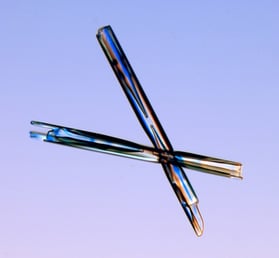Not All Snowflakes Are Created Equal
by Daphne Thompson, on Dec 22, 2016 2:03:00 PM
Not all snowflakes are created equal. Did you know there are numerous crystal shapes that compose the snow that falls? Not all snowflakes look like the classic shape that you cut out of paper when you were an elementary school student.

In the image above, you can see a chart showing how ice crystals grow depending on temperature and moisture available. Let's take a look at just a few basic shapes of snowflakes.
Plates
No, snowflakes plates are the ones you pull out to serve dinner on in the winter. Shaped flat with wide, flat arms, the image below shows why this is called a plate. There are a few types of these crystals; some are solid while others have an ornate, hexagonal shape. In drier conditions, they will be quite simple and as moisture increases, the shape becomes more intricate.

Needles
Ice needles start out column shaped and grow long and thin when the temperture changes slightly. Ocassionaly, these will be hollow and other times the ends with split into smaller needle shapes. Needles are pretty easy to recognize on your jacket when you're outside as they will look like lots of fine, white hairs.

Dendrites
Now, we get to that classic shape. The word "dendrite" means tree-like and describe appearance of multiple branches. There will always be six main branches here due to the way water molecules bond with each other in cold temperatures. The hexagon shape is formed due to to way that water molecules attract each other. These snowflakes can get quite large, up to 5mm, and form intricate shapes. It is the diversity of dendrites that lead to the phrase that no two snowflakes are alike.

Check out this video to see a variety of snowflakes developing. It is quite fascinating to see the process.







